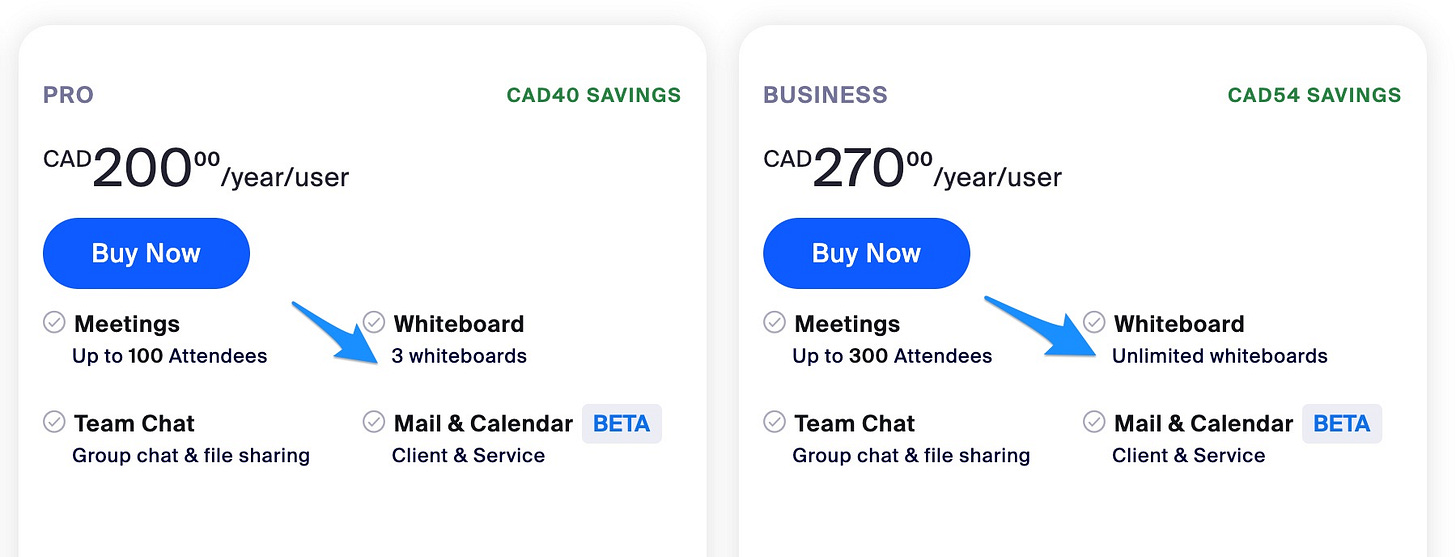Your Guide to PLG Feature Gating
👋 Hi and welcome to PLG Monetized newsletter. Every week we explore how leading SaaS companies leverage monetization to drive growth through self-serve sales.
Feature Gating
Let’s start with the definition...
Feature gating, in the context of PLG monetization, implies restricting access to a certain set of features and only making them available to customers who purchase (or upgrade to) higher tiered pricing plans.
The key reason for implementing feature gating is to drive expansion revenue and increase net revenue retention (NRR).
Example - Hubspot
Hubspot leverages feature gating throughout their plans. For instance, the Professional plan includes features ranging from “Omni-channel marketing automation” to “Phone Support”, which are not available to customers on the Starter plan.
Getting it right…
Here’s the important step to making this work. There are two key steps:
Step 1: Provide a contextual CTA (Call-to-Action)
In the Hubspot example, they leverage the menu to indicate that there are additional features, along with icons and tooltips.
Step 2: Add Feature Discoverability
Feature discoverability lets the user experience the feature (or learn about it), before asking them to pay for it.
In Hubspot, this is done through a trial. You can try the gated features for 14 days to determine if they are right for you. In other cases, companies may have a landing page with screenshots or video walkthrough of the feature.
Note: you can apply this to both freemium users as well as paid users on lowered tiered plans.
Which features should you gate?
When restricting access to specific features, you have to make sure that the product can still deliver value without them. The extra (gated) features should be the ones that open up new use cases or enhance existing ones.
Alternatives to Feature Gating
The alternative to feature gating is usage gating. This monetization tactic puts a limit on feature usage based on some quantity and prompts the user to upgrade, once they hit that limit.
Example - Zoom
Aside from the core video conferencing capability, Zoom offers a feature called Whiteboard. Instead of restricting access, they restrict the number of Whiteboard available in each plan (3 vs. Unlimited).
This give the user ability to try Whiteboards and once they create 3, they will be prompted to upgrade.
The benefit of usage based gating is that users do not have to opt-in into a trial and are more likely to try the feature.
Common Gating Mistakes & How To Fix Them
No feature discovery: if you simply add a bullet point to your pricing plan and hope someone will upgrade based on copy alone, you are likely going to see fewer upgrades or potentially disappointing users if they pay and learn the feature did not meet their expectations. At minimum, consider creating a video that explains the feature to educate them on what to expect.
Plan misconfiguration: if your user just wants that one feature, but you force them to pay for a bunch of other features that they have no interest in, they will either stay on the current plan or feel like they are overpaying if they upgrade. If you notice these signals, consider offering the feature as an add-on or changing your plan configuration.
Wrong price point: to get someone to pay more for a feature (or a set of features), your users must see the additional value. If the price does not justify the added benefit, they will stay on the current plan. If you notice friction at this stage, consider running a Van Westendorp or Gabor Granger survey to find the right price point or simply experiment with discounts or different price points.
Summary
Feature gating can provide great revenue expansion opportunity
PLG patterns such as free time based trial can be used to enable feature discovery
Adjust pricing & packaging as needed to make this work
Additional Resources
Check out pricingsaas.com where you can find a ton of PLG pricing examples
If you need help running a pricing study, we offer it as a service at Buyerson Inc.
We love connecting with people in the industry to generate interesting content - if you are up for a podcast or an interview, just connect with me on LinkedIn






